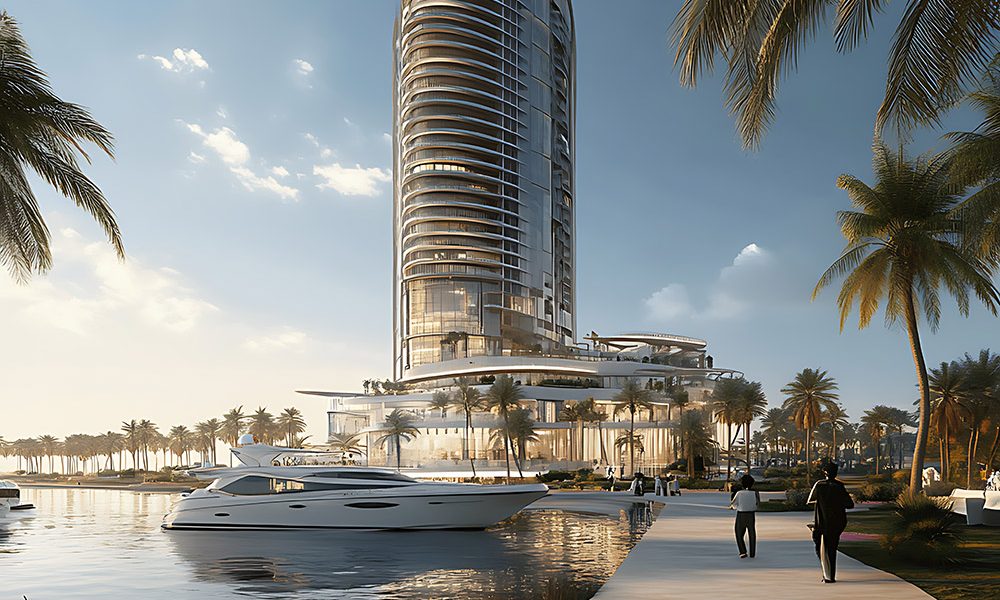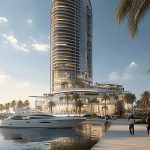Executive Summary
Dubai’s residential real estate market in 2024 delivered record-breaking growth, reaffirming its status as one of the world’s most attractive destinations for property investment. Amid global economic uncertainties, Dubai stood out with robust sales performance, strong demand across all residential segments, and continued appeal to international high-net-worth individuals (HNWIs). With total residential sales transactions exceeding AED 429 billion and an annual price growth of 19.1%, the market demonstrated both resilience and immense opportunity. As the city moves into 2025, the momentum is expected to sustain, offering compelling investment potential driven by strategic vision, high yields, and limited supply in prime areas.
Market Overview
Dubai’s residential real estate market soared in 2024:
- Total Sales Value: AED 429.5 billion, up 32.5% YoY.
- Total Units Sold: 170,992, a 40.3% increase from 2023.
- Average Price Growth: 19.1% YoY, with villa prices leading at 20.2% and apartments at 18.9%.
- Off-Plan Dominance: 63% of sales were off-plan properties, highlighting investor appetite for new developments.
The surge was driven by population growth (+169,000), investor-friendly policies, and limited availability in established communities, pushing expansion into emerging areas.
Historical Market Context
Dubai’s real estate market has evolved significantly over the past decade. From the speculative boom in the mid-2000s, through the global financial crisis, to a maturing and diversified market today, the city has consistently adapted to global and regional economic shifts. The implementation of regulatory frameworks, including the Real Estate Regulatory Agency (RERA) and escrow account mandates, has built investor confidence and contributed to the market’s stability.
Prime Segment Analysis
Dubai retained its global leadership in ultra-luxury real estate:
- Prime Areas: Palm Jumeirah, Emirates Hills, Jumeirah Bay Island, and Jumeirah Islands.
- Prime Price Growth: 16.9% in 2024, with average prices reaching AED 6,627 psf.
- US$10M+ Transactions: 435 deals, a record high, with 153 transactions in Q4 alone.
- Luxury Demand: Driven by global HNWIs, especially from East Asia, with 49% of UHNWIs planning to invest in the UAE within a year.
Scarcity in prime property stock, with luxury home listings down by 40%, further fueled price appreciation. Notable transactions include AED 275 million for a 5-bedroom villa on Palm Jumeirah and AED 240.5 million for a villa in Jumeirah Bay.
Comparative Global Analysis
Compared to global luxury hubs like London, New York, and Hong Kong, Dubai offers superior value for luxury real estate. Average prices per square foot in Dubai remain lower while offering higher rental yields and no property tax, making it a unique proposition for international investors.
Demand Drivers
- Population Growth: Now at 3.825 million, driving rental and ownership demand.
- Economic Strength: Non-oil sector growth at a 5-year high; D33 agenda aims for US$ 8.7 trillion trade and financial expansion.
- Investor Sentiment: 58% of global HNWIs and 76% of GCC-based expats plan to purchase residential real estate in Dubai.
- Rental Market: AED 44.1 billion in value, up 22.6% YoY, with rents rising 10-20% in key communities.
Government reforms, including expanded visa options (Golden Visa), have enhanced Dubai’s attractiveness. Safety, lifestyle quality, and strategic geographic location further amplify its appeal.
Key Motivators for Investors
According to Knight Frank’s surveys:
- 39% of global HNWIs see UAE property as a good investment.
- 44% of GCC-based expats cite high quality of life as a major draw.
- UAE’s tax-free status and business-friendly policies continue to attract international capital.
Supply Dynamics
- Future Supply: 302,000 units under construction (80% apartments), scheduled for completion by 2029.
- Annual Demand Gap: Estimated need for 70,000 units annually until 2040 vs. projected 22,000 completions/year.
- New Launches: Over 125,000 units announced in 2024, with strong activity in Dubai South, The Oasis, and Arjan.
Supply constraints in core areas are shifting focus to fringe neighborhoods, offering modern amenities and better value. Projects such as Palm Jebel Ali and Dubai Creek Harbour are set to reshape the luxury landscape.
Regulatory Environment
Dubai’s real estate sector benefits from stringent regulatory oversight. RERA ensures transparency, while recent reforms have eased foreign ownership restrictions, providing further security for investors.
2025 Outlook & Investment Recommendations
- Forecasted Growth: Mainstream market prices to rise 5%, prime areas by 8%.
- High Yields: Residential yields at 6.3%, above global city averages.
Investment Opportunities
- Prime Districts:
- Palm Jumeirah: Continued demand from UHNWIs.
- Emirates Hills: Limited supply, consistent appreciation.
- Emerging Areas:
- Dubai South: Benefiting from Expo 2020 legacy and logistics hub.
- Jumeirah Village Circle: Affordable entry, high rental returns.
- Off-Plan Investments:
- Attractive payment plans, appreciation upon completion.
- Focus on high-growth corridors like MBR City, Arjan.
Risk Considerations
- Global economic fluctuations may impact investor sentiment.
- Over-reliance on off-plan sales can create supply bottlenecks.
- Rising interest rates globally could affect mortgage affordability.
Conclusion: Dubai offers a compelling case for real estate investors seeking capital appreciation, high yields, and a secure investment environment. With strategic growth plans, limited prime supply, and a rising population, the city is poised for continued success in 2025 and beyond. Investors are encouraged to consider both established prime areas and emerging neighborhoods, balancing immediate returns with long-term growth potential.



